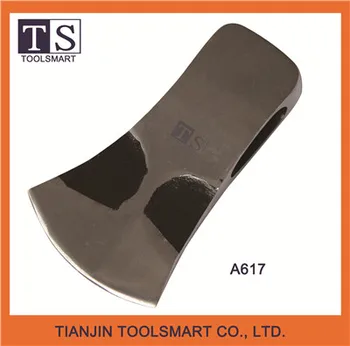- Joined
- Aug 28, 2010
- Messages
- 5,431
Your unfinished work already looks better than this finished example from a Chinese manufacturer:


The BladeForums.com 2024 Traditional Knife is ready to order! See this thread for details:
https://www.bladeforums.com/threads/bladeforums-2024-traditional-knife.2003187/
Price is $300 $250 ea (shipped within CONUS). If you live outside the US, I will contact you after your order for extra shipping charges.
Order here: https://www.bladeforums.com/help/2024-traditional/ - Order as many as you like, we have plenty.

Your unfinished work already looks better than this finished example from a Chinese manufacturer:


Looking good, hope the steel is semi decent as to be worth the work.
you can tell which one was done with my off hand or in an awkward position. still have a bit of clean up on the top bevel. i tried to deepen the notch with my grinder but it didnt work that well. I convexed the cheeks with my sanding disk. the marker is there to better show where the bevels start/end
seems to be mid range in terms of the spark testLooking good, hope the steel is semi decent as to be worth the work.


ground, flap wheeled (tiny dremel version) and sanded to 500. just gotta see if the oxycetylene stuff that's been in the shed for 15 years still works
Anneal, normalize a few times, then quench in water, it's a relatively soft steel so I think the water will be fine. Afterwards a good bronze-ish temper is in order I thinkLooks good.
What are you going to do next ?
Will do, those scraps from the cutting should do nicely.Phantomknives,there's a longish dark line,parallel to the bevel,and a bit higher than your new ground bevel...It's not a crack,or a fissure,by chance?
(hope not,and that it's a photo defect of some kind).
That fragment that broke off the edge is actually a valuable asset-you can use it as a test-piece for HT.Well,you do have that cut-off portion also,a good deal.
I'd recommend experimenting with a small tab of that very material,to see if the grain structure can be made finer,and also how well it'll harden,and in what medium.
Best of luck with the completion of your project.
Btw,the fact that this axe may've originated in China does NOT mean that metallurgically it's crap.I've had decent luck using fragments of busted no-name china axes for blading the WI et c axes,and general use as med.C steel.
It's commonly some simple,10xx-ish alloy,responding well to a triple-normalising cycle for grain reduction.
No, it's not a crack, I scratched it with a file to see where the HT stopped.
If I can't drop the grain size
Based on the big initial chip, it looks like it can get decently hard.Looking good, hope the steel is semi decent as to be worth the work.


Based on the big initial chip, it looks like it can get decently hard.

Ahm...You know,technically,today,Annealing has been superceeded by Normalising,it takes care of everything that Annealing was meant to(other than some machining issues that you'll not have use for).
Also,that kind-an uncontrolled-anneal,has virtually no benefits to the process(like all other HT processes it must be done very exactly,according to the specs of the specific ally).
But,how do you mean,for the Anneal to "not work"?
Is there some kind of Blacksmithing 101 pdf booklet that you can advise? thanksWell,the "softness" is not really anything that you'll need in order to HT that axe.
Let me remind you briefly what Normalising consists of(usually):3 cycles altogether.
1.Heat to just above Critical,or A1.
2.Heat to just Crit.,as you can best aim at it.
3.Heat to just below Crit.
Each time,after heating,allow to cool in Still air,just set it aside....To black,(no longer visible)heat,before the next cycle.
What it'll do is essentially what Anneal was used for in the past:It dissolves the grains,and the new grains will nucleate,and grow,from the intergranular boundaries.
In effect Refining your grain-size,which was your aim,right?After this,you could heat it once again,to just past Crit.,hold maybe a minute at temp(no more,as that's when the grain will begin to grow again),and quench.And then temper.And you're Done!
I do apologise if this advise is not only unsolicited but unwelcome...
